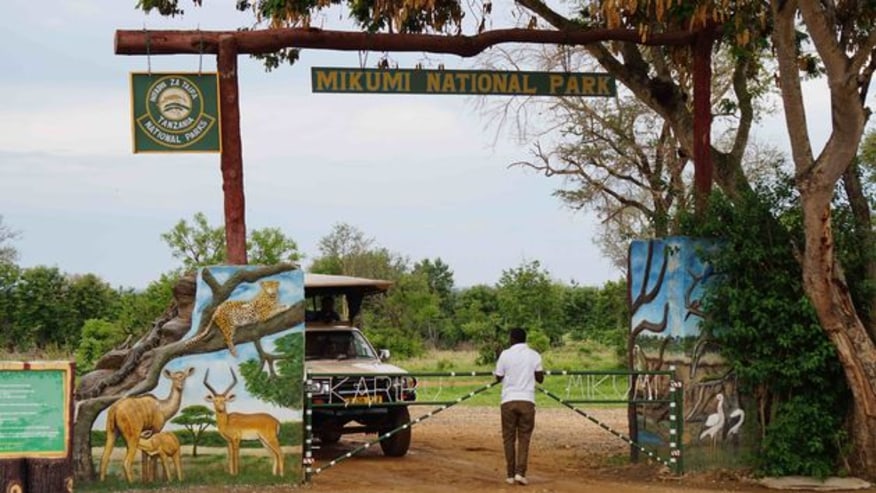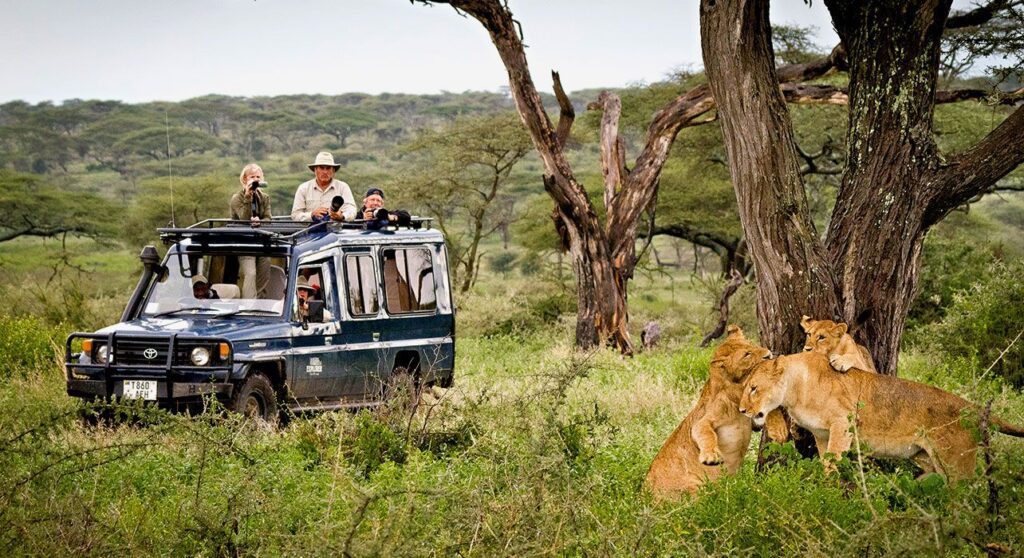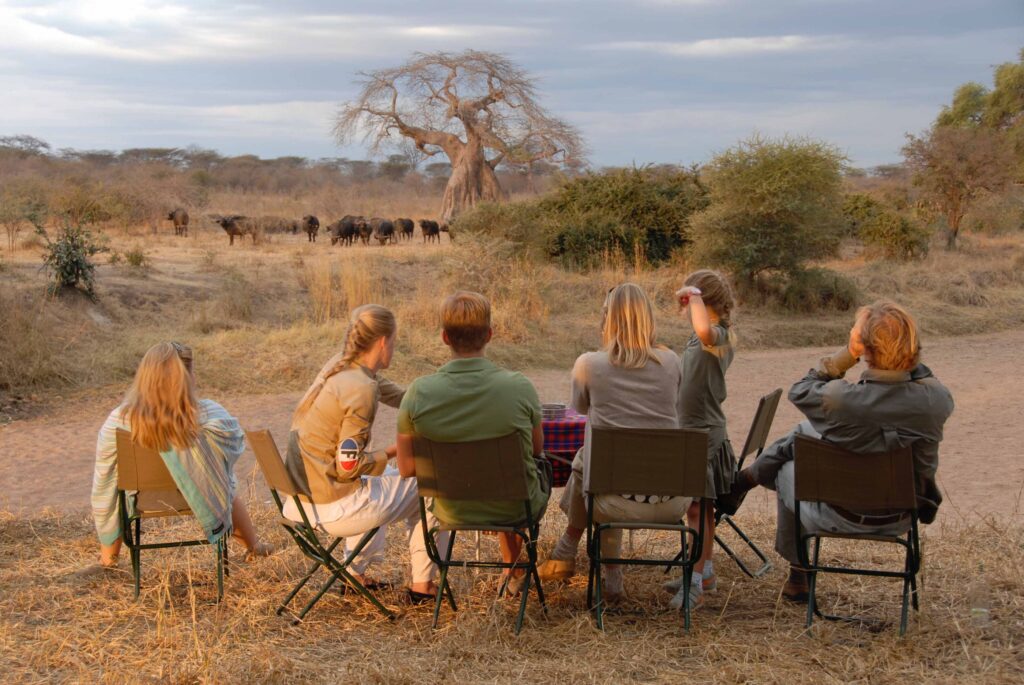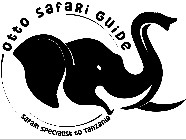In one word – Captivating!
Nestled between the Uluguru Mountains and the Lumango range, Mikumi National Park stands as Tanzania’s fourth-largest national park and a beacon of accessible wildlife adventures.
Located just a few hours’ drive from Dar es Salaam, Mikumi beckons with almost guaranteed wildlife sightings, making it an ideal safari destination, especially for those with limited time on their Tanzania Safaris.

Park Overview:
Mikumi National Park is strategically positioned between the Uluguru Mountains to the north and the Lumango Mountains to the southeast. Spanning over 3,000 square kilometers, this park is a testament to Tanzania’s commitment to preserving its rich biodiversity.
Its landscape varies from the Mkata Floodplain, a wildlife haven reminiscent of the famous Serengeti Plains, to the miombo-covered foothills of the surrounding mountains. Mikumi is an essential part of a larger wilderness that includes the Selous Game Reserve and Udzungwa National Park, creating a diverse and captivating safari circuit.
Introduction:
Accessible and captivating, Mikumi National Park has garnered attention, particularly since the completion of a paved road linking the park gate with Dar es Salaam. This accessibility positions Mikumi as an attractive choice for short safaris from Tanzania’s largest city.
Visitors are drawn to the park for its Big Five sightings, with the Mkata Floodplain serving as a focal point for wildlife encounters. The park’s proximity to Dar es Salaam makes it an ideal starting point for those seeking a quick escape into the heart of African wilderness.
Do you know –
Being Tanzania’s fourth-largest national park Mikumi National Park was established in 1964.
Wildlife Diversity in Mikumi National Park:
Mikumi’s claim to fame lies in its diverse and easily spotted wildlife. The Big Game, including buffalos, zebras, giraffes, lions, leopards, and elephants, populate the park, providing visitors with an immersive safari experience.

Giraffes gracefully browse the acacia stands along the Mkata River, sharing the landscape with herds of zebras and wildebeests. Notably, Mikumi is home to the powerful eland, the world’s largest antelope, offering a unique sighting opportunity. Leopards make occasional appearances, adding an element of mystery to the park’s vibrant ecosystem.
Bird Watching in Mikumi National Park: A Paradise for Bird Lovers
Mikumi National Park boasts a rich avian population, with over 400 recorded bird species. The Mkata Plain emerges as a haven for birdwatchers, featuring colorful residents like the lilac-breasted roller, yellow-throated long claw, and bateleur eagle.
During the rainy season, European migrants join the local birds, creating a symphony of diverse birdlife. The star attractions, however, are the hippos residing in pools located 5 km north of the main entrance gate, accompanied by an ever-changing cast of water birds.
What to Do in Mikumi National Park:
- Wildlife Sightings: Mikumi National Park offers an abundance of wildlife-viewing opportunities. The Mkata Floodplain, with its open horizons, provides a captivating setting for observing zebras, wildebeests, impalas, and buffalos. The park’s game-viewing roads crisscross the landscape, ensuring a thrilling safari experience.
- Day Trip to Udzungwa Mountain National Park: For a change of scenery, consider a day trip to Udzungwa Mountain National Park, known for its spectacular mountain views, waterfalls, and unique flora and fauna. This adds an extra layer to your Mikumi safari experience.You can also go ona day trip from Zanzibar to Mikumi National Parkwhere you the mainland Zanzibar and the Mikumi National Park. It means basically the best of the world in a single day.
- Bird Watching: The Mkata Plain serves as a prime location for birding enthusiasts. With a plethora of species, including the black-bellied bustards, guinea fowls, marabou storks, bateleur eagles, and colorful lilac-breasted rollers, Mikumi promises a delightful bird-watching adventure.
Just a Fact – Mikumi National Parks welcomes approximately 50,000 visitors annually. While this number is less compapred to other Tanzanian’s national parks like Serengeti or Ngorongoro, but here you will feel to more close to nature due to less number of visitors.
Best Time to Visit Mikumi National Park:
While wildlife viewing in Mikumi is possible throughout the year, the best time visit Mukumi National Park is from late June to October during the Dry season. Thinner vegetation and the gathering of animals around waterholes make this period optimal for game viewing.
September and October, marking the end of the Dry season, offer particularly rewarding sightings as large herds gather at the last water sources.
How to Get to Mikumi National Park:

By Road:
Mikumi National Park is easily accessible by a direct highway from Dar es Salaam, offering a scenic and enjoyable drive. The highway divides the park, with the northern part known for its accessibility, especially for game drives along the Mkata Floodplain. Mikumi is just a few kilometers away from Mikumi town and the larger Morogoro town.
By Air:
For those seeking a quicker journey, scheduled flights operate from Dar es Salaam or Zanzibar on specific days of the week. These flights land at the Mikumi Airstrip, conveniently located at the heart of the national park.
Below we have provided a few details on the airlines that connect to Mikumi National Park.
| Airlines | Departure Location | Frequency | Flight Duration | Landing Location | Additional Information |
| Coastal Aviation | Dar es Salaam | Daily | 1 hr | Mikumi Airstrip | Morning and afternoon flights are available |
| Auric Air | Dar es Salaam | Monday, Wednesday, Friday | 1 hr | Mikumi Airstrip | Scenic route, morning departures |
| Safari Air Link | Zanzibar | Monday, Thursday, Saturday | 1.5 hr | Mikumi Airstrip | Combines with flights to Selous Game Reserve |
| Air Tanzania | Dar es Salaam | Tuesday, Thursday, Sunday | 1 hr | Mikumi Airstrip | Reliable schedule often combined with other destinations |
| Regional Air | Arusha | Tuesday, Thursday | 2 hr | Mikumi Airstrip | Limited schedule, needs to check the availability in advance |
Accommodation in Mikumi National Park:
Mikumi National Park provides a range of accommodation options, catering to diverse preferences. From campsites to lodges, visitors can choose an abode that suits their comfort and style. Here are some notable options:
Inside the Park:
- Vuma Hill Tented Camp: Perched on a hillside overlooking the wilderness, Vuma Hill Tented Camp offers 16 spacious guest tents with a colonial décor. With solar-heated water and electricity provided by a generator, guests can enjoy comfort amid nature.
- Foxes Safari Camp (Stanley’s Kopje): Located on a rocky hill on the Mkata floodplain, Foxes Safari Camp features 12 guest tents with panoramic views. Each tent is equipped with twin beds, mosquito nets, and en suite facilities. Electricity is available until 11 pm.
- Tanapa Cottages: Managed by the Tanzania National Park Authority, these self-contained cottages offer basic amenities inside the park. The cottages provide a budget-friendly option for those seeking proximity to wildlife.
Outside the Park:
- Camp Bastian: Situated about 10 km from the main gate, Camp Bastian is an excellent choice for those preferring accommodation outside the park. The camp offers En Suite and Budget cottages, each with a balcony, shower, and tea/coffee facilities. Complimentary breakfast is served, and free WiFi is available.

Final Thoughts :
In conclusion, Mikumi National Park emerges as a wildlife haven, offering an accessible and captivating safari experience. Whether observing the Big Game on the Mkata Floodplain, embarking on a bird-watching adventure, or exploring nearby attractions, Mikumi promises an unforgettable journey into the heart of Tanzania’s natural wonders.
So, on your next Tanzania Safaris adventure consider Mikumi for your next safari itinerary and immerse yourself in the diverse landscapes and wildlife that make this park a true gem of East Africa.
